Weeds: The natural reduction of
weeds in permaculture farming
1) Use of "weeds" for salads and as a
remedy
Weed is not weed - can be used - contains minerals +
vitamins: 1. Goutweed (Giersch) - 2. Chickweed
(Vogelmiere) - 3. Ground-ivy (Gundermann) - 4. Stinging
nettle (Brennnessel) - 5. Common couch (Quecke) - 6.
Dandelion (Löwenzahn) - 7. Sorrel (Sauerampfer) - 8.
French herb / buttonweed (Franzosenkraut) - 9. White
goosefoot (Weisser Gänsefuss, Ackermelde)
Weeds are stealing nutrients from the vegetables or
flowers or are blocking sunlight. At the same time, many
weeds contain many vitamins, minerals and nutrients, more
than many vegetables. Advantages: The weeds stop erosion
and dehydration - are grass plants for beneficial insects
such as ichneumon wasp or tachinid fly, or the flowers of
the partner herbs attract bees, nettle is raw material for
biological fertilizers and pesticides, etc. [web08]. Weeds
are habitats for pests used by beneficial organisms as
food, or weeds are also the habitat for many butterflies
[web18].
1. Ground elder (Giersch) sprouts all year
round, sometimes even in winter, is food for hamsters and
rabbits, contains many minerals, contains so much Vit.A.
like kale, twice as much Vit.C as broccoli and Brussels
sprouts, twice as much protein as kale. Use young ground
elder leaves for salad, young leaves of ground elder can
be prepared like spinach, ground elder soup can be made or
ground elder lemonade [web08] [look ground elder
recipies].

Ground elder
(Giersch) [7]
Young leaves of ground elder are a nutritious salad, older
leaves can be [left in water and decomposed in water and]
used as a valuable fertilizer, as with the nettle. Ground
elder water is a fertilizer e.g. for the heavy feeders
pour it additionally: for potatoes, cucumbers, tomatoes,
peppers or pumpkin [web11].
2. Chickweed (Vogelmiere) grows almost all year on
nitrogenous soils, it is a pointer plant for nitrogen
levels. Chickweed is food for the chickens etc. Chickweed
contains twice as much iron as spinach, more Vit.C than
broccoli or Brussels sprouts, is rich in potassium and
calcium. Chickweed tastes mild, is an ideal source of
vital substances for children. Chickweed is possible in
the salad, it can be cooked like spinach, it can be mixed
with herb quark or butter [web08] [see Chickweed recipes].

Chickweed (Vogelmiere) [8]
Chickweed as a medicinal plant: The chickweed can
also serve as a mulch on bare ground. Chickweed can be
combined into salads, soups, herbal quark, stimulates the
metabolism and digestion. Vogelmiere tea externally and as
an medical compress heals skin problems to psoriasis and
eczema, even when liver problems put it on the skin. Puree
compresses with squashed fresh chickweed: is healing badly
healing wounds, ulcers, abscesses. Taking tea of chickweed
stimulates the metabolism, relieves rheumatism and
respiratory diseases, cough and bronchitis. Eyes: In the
case of sty, one can bathe the eye in chickweed tea ("eye
bath") or one can make compresses with chickweed tea
[web12].
3. Ground-ivy (Gundermann): ground-ivy is a
groundcover plant, easy-care, tastes spicy in herbal
quark, herbal soups, salads, etc. [web12] [see Gundermann
recipes]. Young ground-ivy leaves are slightly bitter, can
be used like parsley [web08]. Gorund-ivy has many other
names:
gill-over-the-ground,
[1]
creeping charlie,
alehoof,
tunhoof,
catsfoot,
field balm, and
run-away-robin
[web08a]
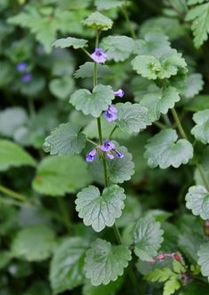
Ground-ivy
(Gundermann) [9]
Ground-ivy is a remedy for chronic diseases, purulent
events, urinary tract diseases, runny nose [web08]. Badly
healing wounds with pus heal with ground-ivy oil,
ground-ivy compresses or ground-ivy ointments (salves).
Ground-ivy tincture (taken once daily 1-2 tsp) stimulates
metabolism and eliminates chronic diseases where pus is:
bronchitis, runny nose, bladder disease, kidney disease
[web13].
4. Nettle (Brennnessel): indicates nutrient
rich and nitrogenous soil [web08], stinging nettles are
persistent and undemanding and contain nettle poison,
vitamins, minerals, iron, histamine, secretin [web13].
Nettles are raw material for organic fertilizer [let it
decompose in water for 2 days] and are also a
bio-pesticide against plant lice [web08].

Stinging
nettle (Brennnessel) [10]
Nettle as a remedy: Nettle contains protein
proteins, especially in the seeds, contains much calcium
3x as much in kale, 5x as much as spinach, contains plenty
of magnesium, iron, Vit.C and Provit.A, therefore many
recipes are possible [web08], [see nettle recipes]. Nettle
can be taken as a nettle tea, in soup, or as spinach or
salad as an ingredient, is stimulizing metabolism and
purifies the body [web14]. Nettle tea is cleaning the
blood web18]. Home remedies with nettle against rheumatism
and gout are also possible, also personal care products
[web08].
Nettle works against rheumatism and gout, can be struck
directly on the joints, where the nettle poison develops
its effect. Apply nettle tincture against hair loss.
Nettle seeds are effective against fatigue [web14]. Nettle
is also possible as personal body care [web08].
Women can stimulate breasts for growing when needed:
slap the breasts with nettle all three days for
stimulating the breast tissue, and give female hormones 1)
chewing anise seeds 3x per day, 2) chewing fennel 3x per
day, 3) make beer massage with the breasts 3 times per day
- and breasts grow one cup in 6 weeks. With some women
breast growing begins with the fourth week, with other
women it begins just in the first week already, per week,
the breast circumference increases by 1cm -
link.
5. Common couch (quick grass - Quecke)
spreads underground in all directions, contains mucilage,
silicic acid, saponins, potassium, iron, Vit.A, Vit.B, is
food plant in crisis times in Northern Europe, is food in
Eastern Europe [web08].

Common couch (quick grass
- Quecke) [11]
Common couch (quick grass) as a remedy: Take 2
tablespoons of fresh common couch juice daily and this
heals liver inflammation, this says German doctor
Sebastian Kneipp. The root tea has healing properties:
diuretic, anti-inflammatory, antipyretic, heals edema,
rheumatism, kidney inflammation, gastritis, liver
inflammation. Boil a few grams of quick grass roots
(rhizomes) in water, take it for a maximum of perhaps 10
days, do not take in the long run, do not take it when
there are heart problems or renal insufficiency [web08].
6. Dandelion (Löwenzahn): The dandelion
leaves contain a lot of Vit.C, protein and potassium like
cultivated vegetables. The yellow dandelion flowers can be
used to make a healthy syrup. Dandelion roots make an
aromatic coffee substitute [web08]. Dandelion with its
taproot is a plant for breaking hard soils which is
destroyed by pesticide machinery agriculture, see
Permaculture:
roots.

Dandelion
(Löwenzahn) [12]
Dandelion as a remedy: dandelion leaf tea causes
more vitality and causes weight loss. Dandelion juice
pressed from all plant parts (press juice) has a healing
effect on complaints concerning the liver, kidneys, bile
and intestine [web08].
7. Sorrel (Sauerampfer): have deep roots up
to 1,5m deep [web16]. The young leaves, which contain no
oxalic acid, can be used in the kitchen [web16]. Young
sorrel leaves are a delicacy and are an ingredient in the
Frankfurt sauce; contain as much protein and Vit.C as
Brussels sprouts, is a tasty spice herb for many dishes
[web08], in herbal salad, omelets, sauces, sorrel soup
[web16], or being used as a salad; young leaves, flower
buds and fresh shoots together can be cooked and served as
vegetables [web08]. Cutting only a part of the sorrel
leaves, new leaves will grow. When the flower bud is cut
off, the energy goes into the formation of new leaves. The
multiplication by flowers and seeds can be limited in this
way [web16]. The older leaves then turn reddish by oxalic
acid [web16]. Grazing animals leave the sorrel on the
pasture and do not eat it because the leaves contain
oxalic acid like rhubarb and this does not taste good for
them. The seeds and flowers are good food for birds, e.g.
for parakeets in a birdcage [web15].

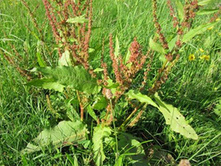
Sorrel (Sauerampfer), the young leaves, which contain no
oxalic acid, can be used in the kitchen [13] - sorrel in
red bloom [14]
8. Galinsoga (Franzosenkraut / Knopfkraut):
comes from Mexico and is stealing other plants nutrients
and sunlighta, but contains 3 times as much iron as
spinach, is rich in magnesium + calcium and has a high
content of vitamins, can be prepared as salad base easily,
can be prepared like spinach and replace spinach, can be
added in soups, can be prepared as pesto, as spice herb
[web08].

Galinsoga (Franzosenkraut /
Knopfkraut) [26]
9. White goosefoot (Weisser Gänsefuss), is
undemanding and produces many seeds; is a vegetable in the
Himalayas, a pseudo-grain, fodder plant; young goosefoot
leaves contain a lot of Vit.C and protein, calcium,
potassium, zinc. But one should eat only little of it,
cooked is the best, because they also contain a lot of
oxalic acid and saponins, do not eat more than 400g cooked
goosefoot leaves per day [web08]. Other websites state
that only "every now and then" goosefoot should be served
as cooked vegetables, e.g. as a spinach substitute. Beans
and goosefoot being cooked together reduce bloating.
Budding inflorescences can be used like broccoli. Dried
seeds can be ground and added to the baking flour. Dried
seeds can also be cooked as groats, reportedly a standard
in India. Seed sprouts are an asset in the salad. For this
purpose, the seeds should first be soaked overnight and
then rinsed thoroughly to remove the saponins [web17].
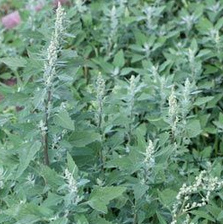
White goosefoot (Weisser Gänsefuss) [15]
White goosefoot as a remedy: To reduce the saponin
content, one should use the dried whole plant or the dried
leaves as a remedy - always dried [web10].
Goosefoot tea internally (leave it to draw
during 5-10min.) 1-3x daily taken as a light laxative,
anti-inflammatory in the mouth and gastrointestinal system
(gastritis, peptic ulcer), allegedly also helps against
rheumatic pain. Stigmasterol in the goose foot should
promote ovulation [for overcoming infertility of women].
Estrogen-like substances regulate menopausal symptoms
[web17].
Goosefoot tea externally can be used as a
bath, as a wash or compress for relieving insect bites,
eczema, sunburn, joint inflammation and swollen feet
[web17].
Goosefoot stem juice allegedly works against
freckles [web17].
Goosefoot seeds can be chewed: relieve blister problems
[web17].
-- leaf mustard [web09]
2) Permaculture techniques for reducing
weeds / competing plants: 1) mulching - 2) plant partner
plants - 3) plant groundcover plants
1) Reduce weeds by mulching
In permaculture, weeds are largely reduced
-- by mulching (
link):
Only the planted vegetables get light, the rest of the
soil gets little light and weeds hardly grow there [web01]

Vegetable patch with straw as mulch
[1]
As a mulch can serve: straw, chopped wood, sand, wood
shavings, sawdust etc.
2) Reduce weeds by partner plants
-- partner plants ("dream partners" -
link)
can be planted densily so weeds have hardly space for
growing there [web01]


Vegetable field with mixed culture of permaculture,
scheme [2] - Table: Effects of vegetable partner plants
[3]
--
Tagetes ("marigold") against "weeds": Tagetes
("marigold") inhibits many proliferating weeds, including
bindweed, couch grass and ground elder. Tagetes is
weakening them or even killing them. The strongest tagetes
flower is the "Tagetes Minuta" [web01]
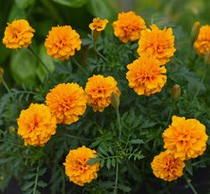
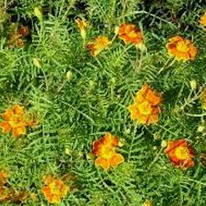
Tagetes - Marigold [4] - Tagetes minuta [5]
-- Purple clover also has an inhibiting effect on weeds:

Red clover, purple [6]
-- Combine sowing mustard with purple
clover [web09]
-- Combine sowing oats with purple
clover [web09]
-- Combine sowing buckwheat with purple
clover [web09]
3) Reduce weeds by groundcover plants
Planting groundcover plants provokes shadowy areas in the
garden bed and also on garden paths, so that weeds can
barely grow and germinate in the long term [web19].
--
Planting groundcover plants so that
weeds can not even grow:
-- Hazelwort is shadowing the
ground [web19]
-- Alpine barrenwort is shadowing
the ground [web19]
-- Japanese pachysandra
(also: carpet box, Japanese spurge) is shadowing the
ground [web19]
-- Woodruff [web24]
-- Ground-ivy [web12]
-- Ground elder as ornamental
form "Variegata", does not grow as fast as the normal
ground elder, and covers the soil only under optimal
conditions
[web33].
Quotation: "Most plants that settle themselves in
undesirable places ("weeds") can easily be suppressed in
planting beds by making sure that there is
no open
soil: plant ground cover plants and mulch until they
grow together." [Web20]
--
Put a fleece against weed, cut it opein
in X shape where plants should be planted [web18,19], and
after planting, sprinkle fresh earth on it [web18] or bark
mulch or pebbles [web19]; "The weed fleece can also be
laid under paving stones, gravel or other materials to
prevent the growth of ground elder and Co." [web19] - [but
a fleece has the disadvantage that there is no nutrient
intake with it]
--
Mulching: mulching or laying straw mulch
[web18,19] or put bark mulch [web19]
--
Fill joints in the plate path with sand
or gravel [web19]
-- After rain clean joints with garden tools after a rain,
because after a rain the soil is soft and most of the
weeds are easy to pull out [web20].
--
Growing moss is prevented by sand
scattered now and then: So every now and then sprinkle
sand in the meadow or in the lawn [web27].
3) Remove weeds - CLEAN tricks with
animals, newspapers, cardboard, ashes, hot water -
WITHOUT pesticides, WITHOUT weeding, WITHOUT salt,
WITHOUT vinegar
You do not need to dig around, because after the digging,
above all weeds grow the most [web32]. You do not need
pesticides for soil maintenance, and you also do not need
to weed, and vinegar or salt does not work because the
soil population and groundwater are damaged. Salty soil
does not work anyway. There are lots of SIMPLE and CLEAN
tricks to get rid of weeds:
3-1. Animals eating weeds away
-- Rabbits: let rabbits run
free in the yard, they eat away smaller weeds, but also
eat clover, the children then run after the rabbit in
the garden and playfully absorb the garden culture
[web09]; rabbits eat dried stinging nettles that have
been dried for 2 hours, so they don't burn any more
[web36]
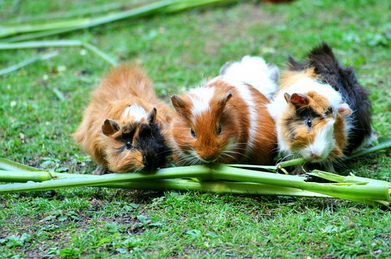
Guinea pigs eat weeds, but also eat clover [16]
-- horses + goats eat standing, fresh
nettles, these animals don't feel any burning of any
nettle[web36]
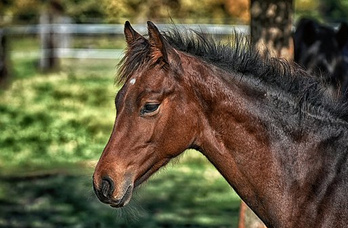
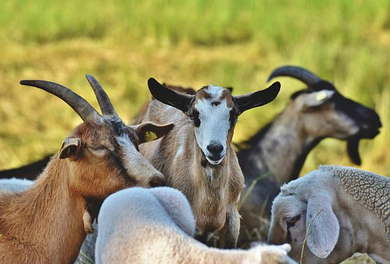
Horses eat stinging nettles [17] - goats eat stinging
nettles [18]
-- goats eat stinging nettles, because
these animals don't feel any burning [web36]; goats eat
up overgrown areas and can systematically be used for
landscaping [web49]. Pigs and goats are
plowing and cleaning complete fields [web55].
 Goats eat stinging nettles and are
landscape guardians against scrub encroachment [18]
Goats eat stinging nettles and are
landscape guardians against scrub encroachment [18]
Goats also eat hanging branches from trees which
normally would be cut. Goats eat all what is too much in
an orchard, and chicken take all little things away
[gardening of Mr. Fukuoka, permaculture pioneer in
Japan].
-- Pigs plow fields and eat all the
weeds, which disturbs, and in this way never any plow
must be used [web53] - and goats make the
same plowing work [web55].

Duroc pigs on the permaculture farm of Sepp Holzer in
Austria are plowing the fields and eat all weeds away
[19]
-- Reptiles eat nettles [web48]
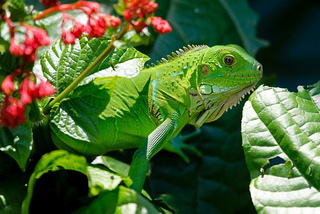 Reptiles eat nettles, for example a Green Iguana [20]
Reptiles eat nettles, for example a Green Iguana [20]
-- Educate cattle for weed-eating

Herd of cattle, cattle herds on the fence: It's possible
to educate cattle to eat weeds when the weeds are
non-toxic - and in this way the food supply for cattle
in nature is extended (!) [21]
Cattle can be educated to eat weeds, and that does not
take much time. The mother animals then automatically
educate their calves to eat weed as well.
1) Young cows are the best students who want to try
something new and then pass on the knowledge to their
calves.
2) It is important to know exactly which weeds are
poisonous and which are non-toxic.
3) One is feeding the cattle for 4 days with food they
already know, and on the 5th day the new weed comes,
which is simply accepted as being normal something new.
4) In a pasture, bovine cattle can practice weeding the
weeds.
5) Many weeds are so nutritious that they have the same
level as normal feed.
6) After a training, bovine cattle also eat weeds with
thorns and spines, they can proceede spines and thorns
without injuries or diseases.k
With this training to include weeds in bovine cattle
diets will also increase the feed supply for bovine
cattle, and pesticides will no longer be needed against
the weeds [web37] or only against toxic weeds...
-- Goats and sheep can be educated to eat weeds:
In steep terrain one can let goats and sheep to eat
weeds, these animals are lighter and less damaging to
the slopes [web37] - Sheep are timid and can not be used
for work in urban areas with dogs and joggers etc.
[web51].

Goats against bush encroachment - and eat nettles [18]
-- Sheep eat weeds in shrubberies away:
European sheep elks (Schopfelschafe) only eat plants
with very low crude fiber content (1'48 ''). If the
crops are woody and the weeds are soft and tender in
taste, the sheep only eat the weeds (2'5 ''). Sometimes
the sheep also eat a little bit from the crops, but they
never touch conifers go (3'9 ''). This is the case in
the hedge nursery in Aichach (Bavaria) with pioneer
organic farmer Mr. Hutzler [web38].

Sheep "are mowing" meadows and lawns [22]
-- Sheep "are mowing" meadows and lawns
and fertilize it at the same time [web39]. The Breton
dwarf sheep is the smallest breed of sheep, good for
small areas. Sheep also eat cut branches of trees
[web40].
[Idea: Who wants to prevent the fertilization, so that
the lawn is not "cacked", puts on the sheep diapers or a
bag around the tail. The fertilizer can then be used in
gardening].
NO LAWN! - AVOID LAWN! You should avoid
lawns because there are hardly any flowers and wildlife
is scarcely available. Lawns are sterile surfaces that
do NOT help nature AT ALL [web54].
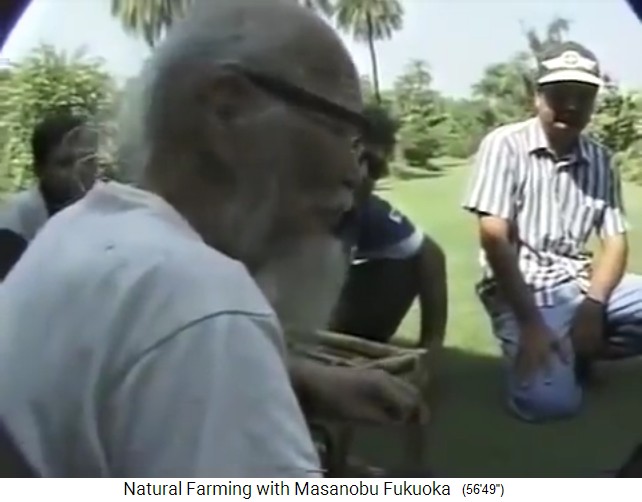
Permaculture pioneer Masanobu Fukuoka is preaching
against the sterile, English lawn [25]
-- Donkeys preserve dry, lean areas from
bush encroachment, even in the cities. The donkeys eat
mainly weedy plants and thus give space to alkaline
meadows. Donkeys eat lean plants, rich in fibers and
high in energy, also branches of trees. Donkeys don't
like wet meadows because they sink with their hooves
[web51].
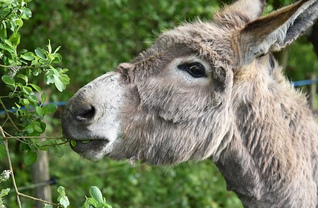
Donkeys eat weedy plants and against bush encroachment,
also branches of trees [23]
-- Buffalo: Water buffaloes in rice
fields eat the weeds on the dams between the rice fields
- and they eat straw remains of the harvest [web52].

Water buffalo eat weeds on rice banks away [24]
3-2. Tricks against weeds with
newspapers, cardboard, ashes, hot water, water solutions
etc.

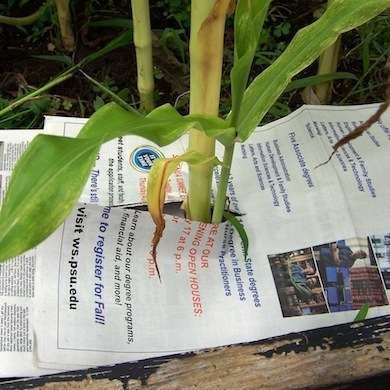
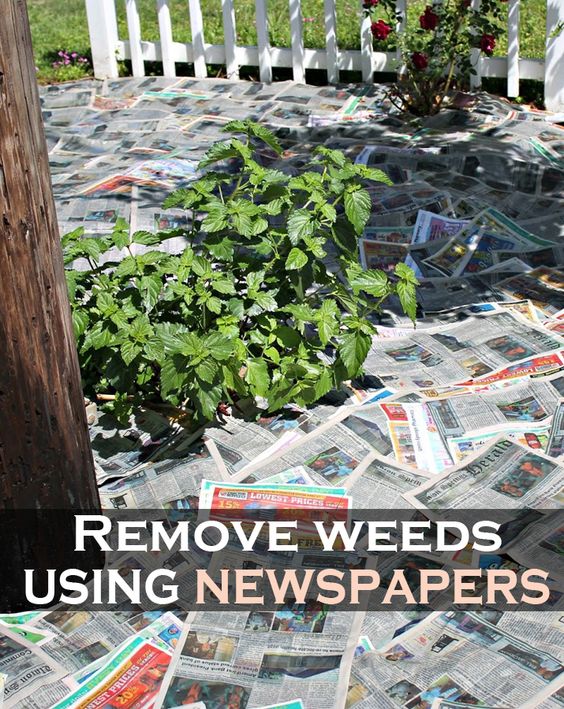

Put newspaper against weeds 01,02,03 [27,28,29] - put
cardboard against weeds [30]
--
newspapers and cardboard etc. against weeds:
duration of action 2 years [web21,31]. Before putting the
newspapers / cardboards one can sprinkle horn shavings or
plant fertilizer because the discomposing of paper (some
layers of newspaper paper) and cardboard consumes
nutrients of the soil provoking deficiency symptoms with
the plants [web31].
There are different methods to get rid of weeds applying
newspaper or cardboard:
-- put newspaper / cardboard fixed with
big stones, after a time without sun, the
weeds wither and you can easily pull them out [web21],
put a compost layer on it and sow [web32]
or
-- cut off large weeds, then lay out newspapers /
cardboard and distribute bark mulch on top of it,
then everything will die off under the mulch surface and
the bed will be ready for new plantings [web22], put a
compost layer on it and sow [web32], bark mulch contains
tannic acid [web31]
or
-- lay out newspapers / cardboard and put wood
chop on it, when weed killing occurs inside
or next to vegetable and fruit beds, because chopped
wood does not contain tannic acid [web31]
or
-- lay out newspapers / cardboard and put
peat-free vegetable soil on it, within
vegetable beds [web31], then everything will die out
under the mulch surface and the bed will be ready for
new plantings [web22], put a compost layer on it and sow
it [web32]
or
-- This method also works with old newspapers,
magazines, leaflets, cardboard or pizza boxes,
especially in combination with bark mulch. When the
newspapers or cardboard rot, they are simply reissued -
newspaper paper has to be laid out in several layers,
otherwise everything breaks too fast, the method works
best with cardboard or with cut cardboard boxes [web23]
The procedure: 1) tear out weeds - 2) put on newspapers,
cardboard, etc., everything overlapping - 3) pour the
newspapers, cardboard, with water etc. -
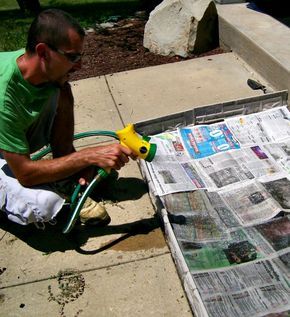
Put newspaper against weeds and pour it with water [31]
4) Spread bark mulch on it [web23] or wood chop on it
[web31] or peat-free vegetable soil on it [web31]. After
a few weeks, the newsprint or cardboard is removed, the
dead weeds can be easily removed with a rake. Then one
can put a thin layer of ripe compost on it and sow new
seeds on the compost [web32].
Stubborn weeds only give up after 2 years with this
newspaper pulp method, but then even the most stubborn
weeds have gone away with this chemistry-free method
[web31].
Printing ink is today (2018) without toxic additives. But
glossy brochures should not be used [web31].
Over time, new weeds settle on wood chippings, but they
can be removed easily [web31].
--
Scatter ash against the weeds, spread
the ashes between the crops and the weeds disappear
[web25]

Ashes from natural wood is fertilizer and against weeds
[32]
And ash is also a fertilizer [web56] if the ashes are from
untreated wood (no charcoal, no briquettes, no varnished
wood, etc.) [web57].
--
put corn gluten fodder (Maiskleberfutter):
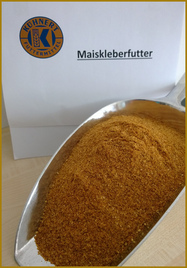
Corn gluten fodder
(Maiskleberfutter) [33]
Corn gluten powder is the waste from corn flour production
and consists of a "mixture of shells, de-oiled germs, glue
and spring water components." Corn gluten powder has a
high energy and protein content and can thus reduce
concentrated feed [web57].
This corn gluten feed can also be used against weeds:
"Corn gluten feed ensures that weeds can not germinate but
at the same time does not attack the other plants. Best to
use is is early in spring." [Web35]
--
Rapeseed oil solution against weeds: Mix
a rapeseed oil solution (water: rapeseed oil = 7 : 3),
spray it during the day, and the wax layer of the leaves
dissolves, the plant dries out [web46].

Rapeseed oil with rapeseed blossoms [34] - mix it in water
and spray it against weeds - the wax layer of the leaves
will be destroyed, the plant dies.
--
Pyrethrum: Japan's permaculture pioneer
Fukuoka made a natural insecticide , Pyrethrum from
Chrysanthemum rots, that he had to spray on his vegetables
during the early days of his farm conversion in Japan to
keep things like cabbage worm and cabbage moths away
[web57].
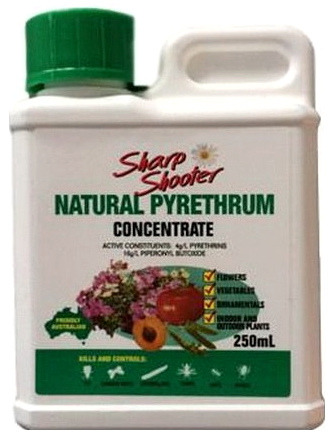
Pyrethrum, biological
pesticide [42]
Mossad Wikipedia says: "Pyrethrum is obtained from the
dried flowers of Tanacetum species by crushing or
extraction with solvents. In former times, the powderised
flowers came in different forms on the markt. The only
difference is that Tanacetum can be in different sub
species." [web58]
--
Vodka soapy water against weeds: mix 1
table spoon of vodka with 2 glasses of water with a little
washing-up soap, spray it, and the plants dry off [web35]

+

+

Vodka [35] in water [36] with soap [37] is a pesticide
-- the "
potato cure" for the soil, for
example against ground elder:
"Experienced gardeners swear on potatoes as
efficient weed suppressants: the plants shade the soil
with their dense foliage and dispute the yaw water and
nutrients at the same time. Especially before the
installation of a new garden on a new location the one
year potato cultivation is recommended because there is
not only weed suppression with the potatoe plants but
they also loosen the soil." [web33]
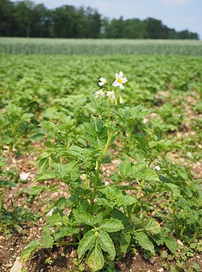 Potato fields act as a
1-year cure against weeds and loosen up the soil [38]
Potato fields act as a
1-year cure against weeds and loosen up the soil [38]
- the hot water shower against weeds between floor
plates:
--
the hot water shower against weeds in cracks:
 Hot water against weeds in cracks, for
example at an airfield [39]
Hot water against weeds in cracks, for
example at an airfield [39]
-- Weeds will scald with boiling water, let them dry and
then remove plant remains [web18]
-- On sidewalks in towns one can use a mobile hot water
tank system with a "hot water broom" against weeds
between pavement slabs and after a few minutes
everything is dead and can be plucked out, as in
Burgvedel near Hanover [web29]
-- In the garden one should not use hot water, because
otherwise also soil animals and earthworms are killed
[web30]
-- One can omit the hot-water shower by planting
beautiful plants in the cracks and thus giving no chance
to weeds: "Smart (or lazy) gardeners consciously plant
desired plants in the cracks, low mosses look nice or
when there are bigger cracks also cushion thyme can be
planted which does not even be destroyed when people are
walking on it." [web31]
Cut the flower heads
-- Cut flower heads to prevent seeds from developing
[web18]
-- "Many weeds do not like it if they are cut again and
again and then don't come again." [Web34]
![Garden scissors [40]: Many weeds can not tolerate
cutting them again and again and then stop growing Garden scissors [40]: Many weeds can not tolerate
cutting them again and again and then stop growing](../d/004a08-unkraut-d/040-gartenscheren.jpg)
Garden scissors [40]:
Many weeds can not tolerate cutting them again and again
and then stop growing
Weeding: after a rain
-- "The best time for weeding is after a good rain shower"
because then the earth is soft [web34]
-- Tap root plants such as dandelion can easily be
completely excavated after a rain with the dandelion
piercer ([tap root piercer [web18]) easily [web20]
-- also ground elder can be reduced with the dandelion
piercer [web20].

Weed piercer: sorrel piercer for the sorrel's tap roots,
this can also be used excellently against dandelions [41]
Dig up the whole plant bed and sow again
-- when there are lots of dandelions, it is worth digging
the field completely and resewing the area [web20]
-- In garden beds interspersed with weeds, only the
renewing of the garden patch will help, e.g. in the case
of ground elder: "In autumn or spring you should remove
all the perennials, divide the rhizomes and carefully pull
out all the rhizomes of ground elder, then free the patch
area from the weeds and finally put the shrubs back into
the ground." [Web33]
Cracks in garden plates with "weeds"
-- Hot water [web18]
-- Clean the cracks by scratching [web18]
-- Burn the weeds flaring the garden plates [web18]
-- Use a hard street sweeper sweeping fresh weeds
offspring away [web18]
and there are 100s of more tricks with plants and extracts
against weeds, one just has to know about.
4) Weeds in the bio bin
-- Weeds can only be used for the compost heap if there
are no seeds guaranteed
Other garden experts clearly recommend:
--
NO weeds in the compost: The unwanted
plants must be placed in the bio-waste bin to be disposed
of and NOT land on the compost heap, otherwise they may
sprout and sprout again, and when the compost is then
distributed, weeds will be distributed again. Just THIS
has to be avoided [web26].
-- burning off weeds with a gas flame in the garden
himself is risky because the flames can spread [web28]
What happens when pesticides are sprayed
-- All beneficials are also poisoned and often killed just
like the pests
-- Pets and cats must not go out after the application of
pesticides until the next rain will wash the pesticide
into the waters, and cats just don't eat any grass
[web50], but
-- other animals do such as rabbits, hares, roe deer,
pheasants, wild cats, etc. can poison themselves badly
[web50].







Ground elder (Giersch) [7]
Chickweed (Vogelmiere) [8]
Ground-ivy (Gundermann) [9]
Stinging nettle (Brennnessel) [10]
Common couch (quick grass - Quecke) [11]
Dandelion (Löwenzahn) [12]


Galinsoga (Franzosenkraut / Knopfkraut) [26]
White goosefoot (Weisser Gänsefuss) [15]
Vegetable patch with straw as mulch [1]



Goats eat stinging nettles and are landscape guardians against scrub encroachment [18]
Reptiles eat nettles, for example a Green Iguana [20]






Corn gluten fodder (Maiskleberfutter) [33]

Pyrethrum, biological pesticide [42]
+
+
Potato fields act as a 1-year cure against weeds and loosen up the soil [38]
Hot water against weeds in cracks, for example at an airfield [39]
Garden scissors [40]: Many weeds can not tolerate cutting them again and again and then stop growing











